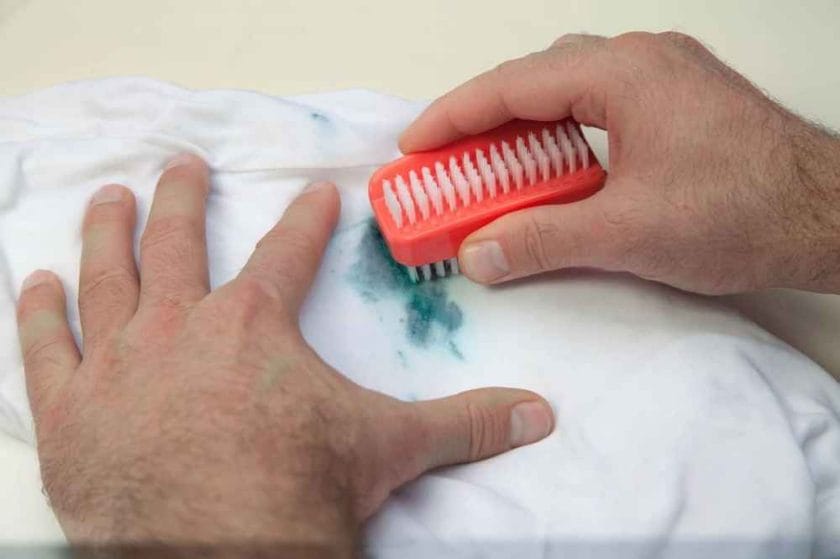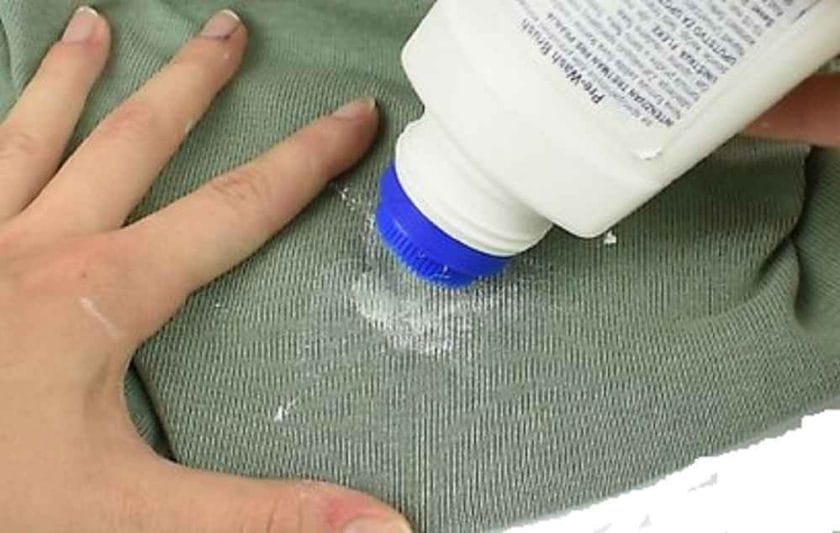Acrylic paint is a popular choice among artists due to its versatility and quick-drying nature. It is commonly used for a variety of projects, including canvas paintings, murals, and even on fabrics and surfaces.
When painting, it is common to get paint somewhere you did not intend to. While some paint can be easily washed off, acrylic paint is different.
Acrylic paint dries fairly quickly and it is water resistant when dry, which makes cleaning it off stencils a bit difficult. In this article, we’ll share the fastest and easiest way to clean dried acrylic paint off your stencils.
Understanding Dried Acrylic Paint
Acrylic paint is a water-based paint made of pigments suspended in a polymer emulsion. The fast-drying nature of acrylic paint makes it challenging to remove once it has dried on a surface.
The paint forms a film that bonds to the surface, making it difficult to remove without damaging the surface or the stencil.
Preparing for Cleaning
Before starting the cleaning process, it is essential to gather the necessary tools and materials. These may include warm water, a solvent such as rubbing alcohol or vinegar, an abrasive material like baking soda or sandpaper, a scraper, and a sponge or cloth.
It is also important to consider safety precautions when cleaning stencils. Solvents can be flammable and emit fumes, so it is recommended to work in a well-ventilated area.
Additionally, it is essential to wear protective gloves and eye protection when working with solvents.
Step-by-Step Guide to Cleaning Dried Acrylic Paint from Stencils
Using warm water
The first step in cleaning dried acrylic paint from stencils is to soak the stencil in warm water. Soaking helps to loosen the paint and make it easier to remove.
Next, use a scraper to remove as much of the dried paint as possible. This step is crucial in minimizing the amount of solvent needed to remove the remaining paint.

Using solvent
If the paint still remains on the stencil, it is time to bring in the solvent. Soak the stencil in a bowl of the solvent for several minutes, or apply the solvent directly to the painted area using a cloth or sponge.
The solvent will dissolve the paint and make it easier to remove.
After soaking the stencil in the solvent, use an abrasive material to scrub away the remaining paint. This could be baking soda, sandpaper, or any other material that will not damage the stencil surface. Be sure to scrub gently to avoid damaging the stencil.
Finally, rinse the stencil thoroughly to remove any residue left by the solvent or abrasive material. Dry the stencil completely before storing or reusing it.
Maintenance and Care for Stencils
Preventing dried acrylic paint from accumulating on stencils in the first place is the best way to extend their lifespan.
To prevent this from happening, it is recommended to clean stencils immediately after use. This will remove any wet paint before it has a chance to dry and bond to the stencil surface.
Proper storage of stencils is also crucial in maintaining their condition and ensuring their longevity. Store stencils in a clean, dry place and keep them protected from dust and dirt. Consider using plastic sleeves or containers to keep stencils safe when not in use.
In addition to these preventative measures, it is recommended to clean stencils regularly to remove any build-up of paint or other materials.
The method described in this article can be used as a general guideline for cleaning stencils, but it is always important to check the manufacturer’s recommendations for specific cleaning instructions.

Conclusion
Removing dried acrylic paint from stencils can seem like a daunting task, but with the right tools and techniques, it can be done effectively and efficiently.
By following the steps outlined in this article, you can restore your stencils to their original condition and extend their lifespan.
It is important to remember the importance of proper preparation and safety precautions when cleaning stencils. Regular maintenance and proper storage will also help to ensure that stencils are always ready for use.
With these tips and guidelines, you will be well on your way to achieving great results in stencil cleaning. Happy crafting!
Frequently Asked Questions
Can I use soap to clean acrylic paint off stencils?
Yes, you can use soap to clean acrylic paint off stencils, but it is not recommended as the soap can leave residue on the stencil surface.
Solvents such as rubbing alcohol or vinegar are more effective in removing dried acrylic paint and are less likely to leave residue.
Can I use a power washer to clean stencils?
While a power washer may remove dried acrylic paint, it can also damage the stencil surface and weaken its structure. It is recommended to use gentler methods such as soaking, scraping, and scrubbing with an abrasive material.
How do I know which solvent to use to clean dried acrylic paint off stencils?
The best solvent to use will depend on the material of the stencil and the type of paint used.
Solvents such as rubbing alcohol and vinegar are commonly used to remove acrylic paint, but it is always important to check the manufacturer’s recommendations for specific cleaning instructions.
Is it safe to use solvents to clean stencils?
Solvents can be flammable and emit fumes, so it is recommended to work in a well-ventilated area and wear protective gloves and eye protection when using solvents to clean stencils.
Can I use sandpaper to clean dried acrylic paint off stencils?
Yes, sandpaper can be used to clean dried acrylic paint off stencils as an abrasive material, but it is important to use a fine-grit sandpaper and to scrub gently to avoid damaging the stencil surface.
